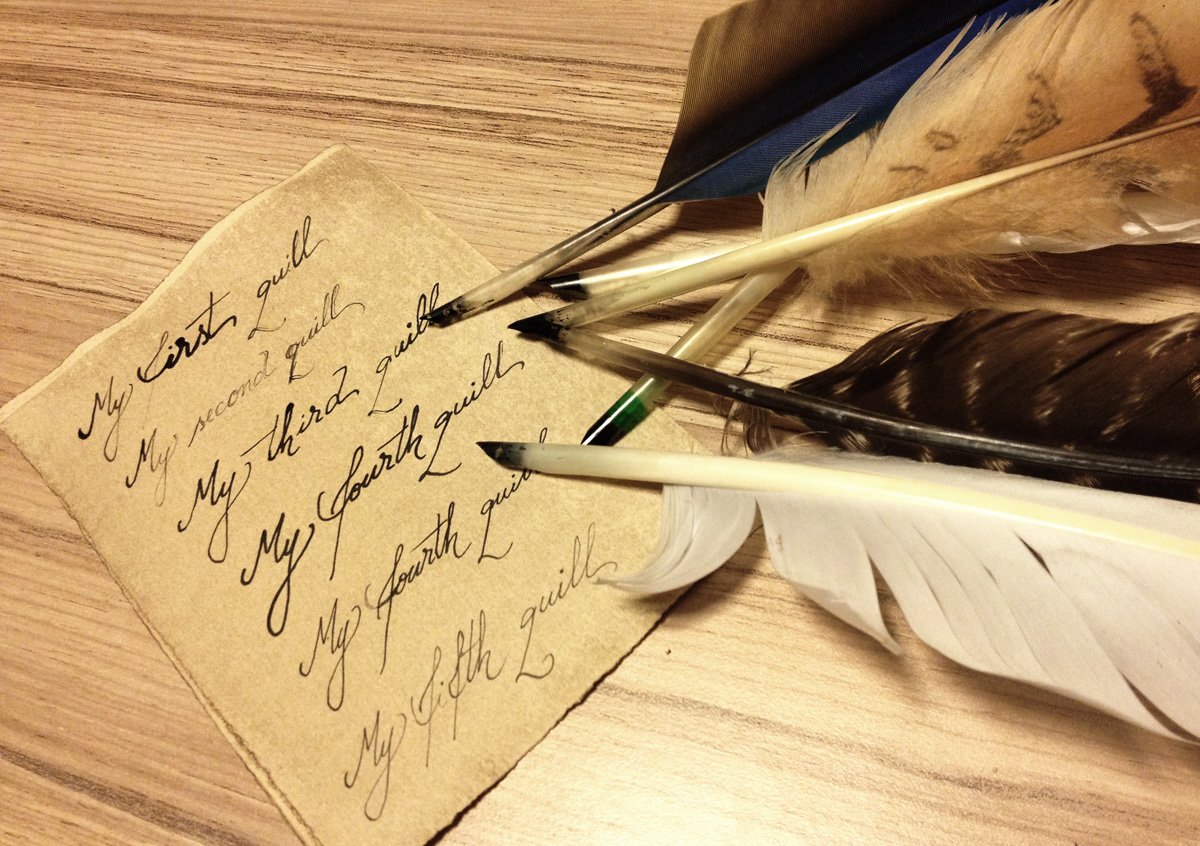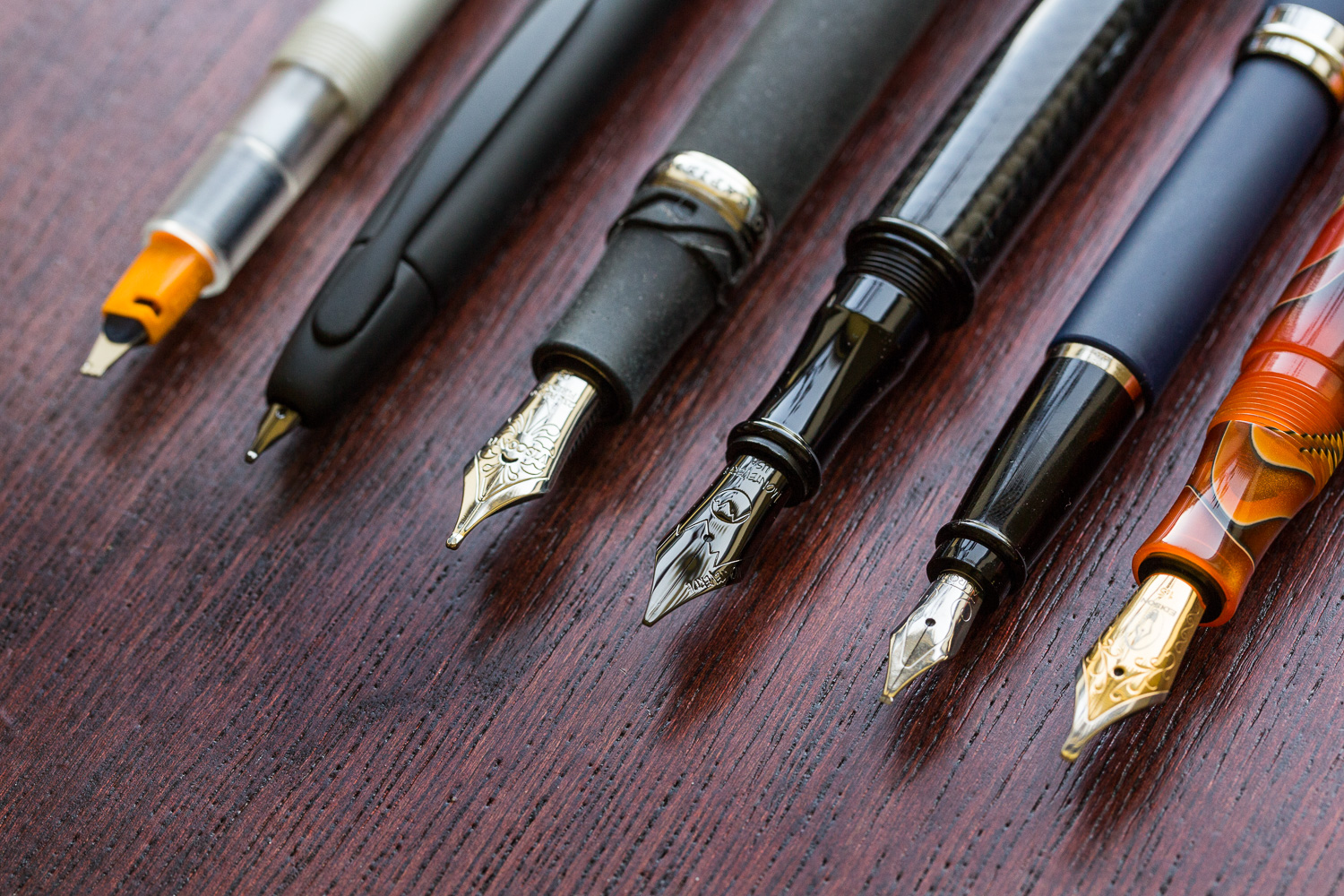No doubt that writing is part and parcel of the human pursuit of knowledge. Teaching, learning, and documenting sciences have all depended on it. Writing, respectively, depended on an understood script system, a medium to write on, and an instrument to write with. Just like the journey paper had from papyrus to e-paper—tackled in the “Spring 2013” Issue of the PSC Newsletter—pens had a corresponding history of development. Let us now skim through the major stops of this journey.
Early Forms
The walls of caves witnessed the first inscriptions of Man around 6,000 years ago, sharpened stones being the only available carving tools. Around 3000 BCE in Ancient Egypt and Mesopotamia, writing on papyrus and clay tablets respectively flourished.
To write on papyrus, Egyptians used thin reed brushes or pens held in wooden or ivory palettes, which had a depression to hold inks. According to some researchers, the use of reed pens continued until papyrus was replaced by animal skins, vellum, and parchment as a writing surface.
To carve on clay, a writing instrument that would make clear marks without crumbling the surface was needed; hence, they used styluses made of reeds with sharp triangular tips. It is worth mentioning that later, around 1300 BCE, Romans used similar metal styluses to carve on wax tablets.

Quill Pens
As the use of vellum and parchment flourished, writing with quill pens made of birds’ feathers altered the style of writing. Long wing feathers from swans, turkeys, and geese worked best. The concept depended on the apparent natural ink reserve found in the hollow channel of a bird's feather.
The feathers were plucked and dried with the application of gentle heat. Then, the fatty materials, which would interfere with the ink, were removed. Writers had to sharpen the quill pens for use, and they were easily re-sharpened when the points got dull. The pen was dipped in an ink well to fill the hollow shaft of the feather, which works as an ink reservoir.
Quill pens remained dominant from 600 to around 1800 CE; that is, they were still fit for more recent forms of paper.

Metal Dip Pens
It is suggested that the first metal pen was patented in 1803, but was not commercially exploited. In 1819, John Scheffer received a British patent for his half quill, half metal pen that he attempted to mass manufacture. However, only in the 1820s did the mass production of metal dip pens emerge in Birmingham, England.
A more enhanced form of metal pens, the steel-point pen, was patented in 1830 by James Perry. The design of his pen provided a slow and steady flow of ink and provided a smoothness superior to the earlier steel-point pens.
By the 1850s, quill pen usage was fading and the quality of the steel pens had been steadily improving.

Fountain Pens
The next major advancement came with Lewis Waterman’s patent of the first practical model of fountain pens in 1884. Earlier models were plagued by ink spills and other failures that made them impractical and hard to sell.
The pen composed of three main parts: the nib, which has the contact with the paper; the feed part under the nib controls the ink flow; and the round barrel that holds the nib and feeds it with ink, and protects the internal ink reservoir.
Ink reservoirs filling technology underwent a number of innovations from different industrialists during the twentieth century. Nowadays, fountain pens still sell, but as a classic writing instrument.
Ballpoint Pens
The idea of using a rotating ball to distribute the ink to the paper was developed by the American inventor John Loud, patented in 1888. It was originally a product to mark leather; however, it was not exploited commercially.
During the 1930s, Hungarian Brothers Lazlo and Georg Biro began experimenting with a practical ballpoint Pen. Laszlo was issued a patent to the pen in 1938. In 1943, he introduced the commercial model, and the design was licensed for production in the United Kingdom to supply the Royal Air Force who had found that it worked better than fountain pens at high altitude. In many parts of the world, the ballpoint pen is known as a biro.
In 1945, the French Marcel Bich bought the patent from Biro and the pen became the main product of his Bic Company. Bich developed the industrial process for manufacturing ball point pens that lowered the unit cost dramatically.
Roller Ball Pens
In the early 1980s, roller ball pens were introduced. Unlike the thick ink used in ball point pens, the new pens employed a mobile ball and liquid ink, which produces smoother lines. Several technological enhancements during the eighties and the nineties of the past century greatly improved the performance of roller ball pens.
Milliards of types and brands of pens marking a huge industrial activity worldwide are available in markets today. Moreover, digital pens converting handwriting into digital data utilized in various applications are trendy input devises nowadays. This long journey will not end as long as the creative human mind continues to design innovative instruments.

References
history.org
brighthubeducation.com
ringpen.com/
dailykos.com
engineersgarage.com
*Published in SCIplanet, Spring 2015 Issue.